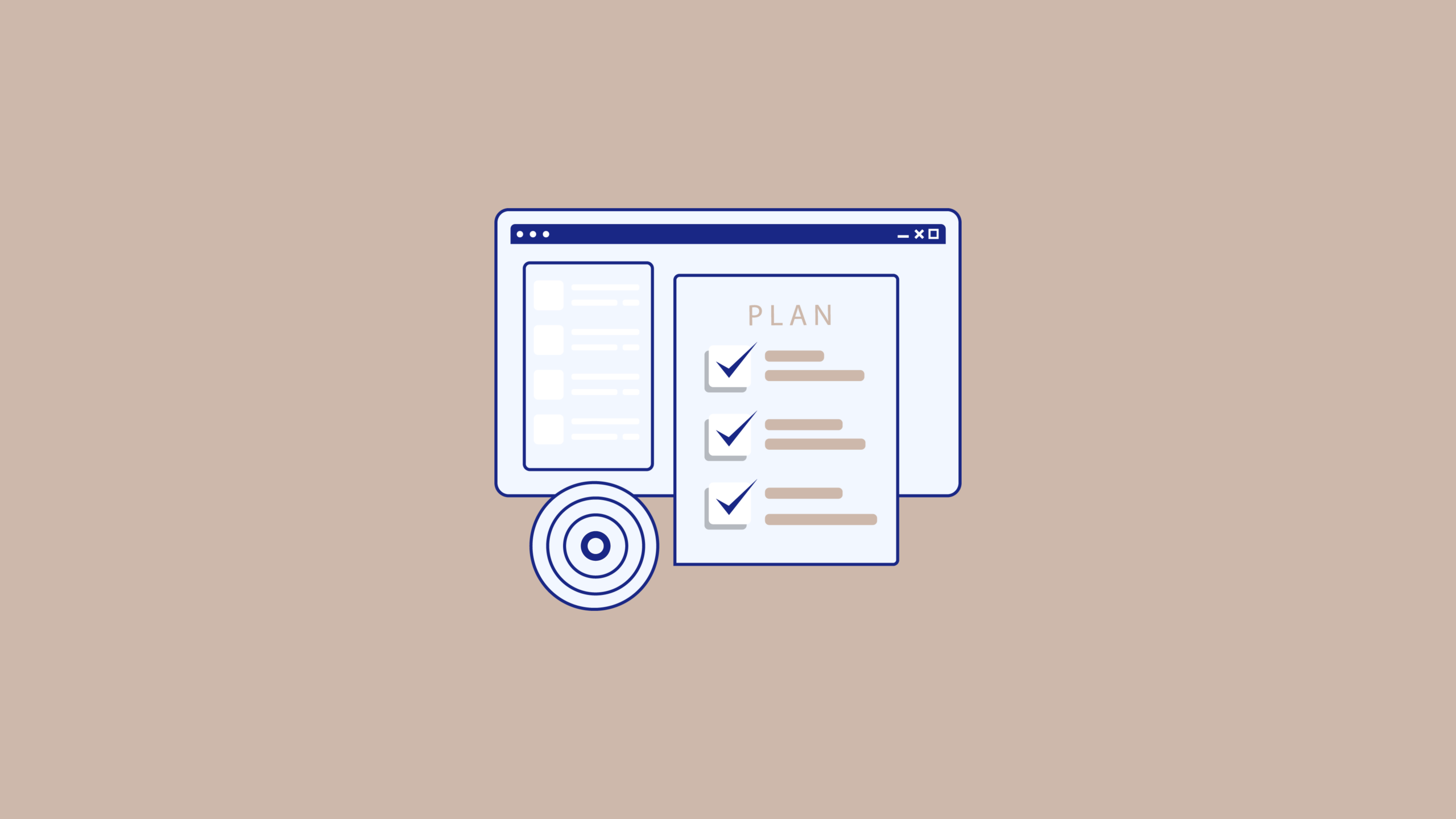In essence, project management is the process of managing one or more projects that take a finite amount of time and money to complete. Even if you’re not working on a project at work, chances are you’ll be involved in some type of project every year.
Lean project management, derived from Lean manufacturing, focuses on maximizing value while minimizing waste throughout the project life cycle.
Whether you’re a seasoned project manager or someone who’s just starting out, this guide will equip you with the knowledge and tools you need to successfully plan, execute, and close any project.
Project management is a crucial process that helps organizations achieve their goals by efficiently using resources and managing risks. It involves a wide range of activities, from defining project goals and objectives to managing project stakeholders and communicating with team members. Project managers are responsible for ensuring that projects are completed on time, within budget, and to the satisfaction of stakeholders.
This guide is designed to provide you with a step-by-step approach to project management, with practical tips and best practices that will help you successfully navigate each stage of the project life cycle. Whether you’re working on a small project or a large one, this guide will help you achieve your project goals and deliver value to your stakeholders.
So, if you’re ready to dive into the world of project management, let’s get started!
Definition of Project Management
Project management is more than simply setting up a Gantt chart or learning how to use Microsoft Project. It is the application of processes, methods, skills, knowledge, and experience. Everything that involves completing and finishing a task or a project.
The most overriding characteristic and a common theme of project management are that it has final deliverables. These deliverables are constrained to a finite timescale and budget.
There are various types of project management methodologies, such as Agile, Waterfall, Scrum, and Lean, each suited for particular industries, project sizes, and complexities.
However, in order for it to be successful, project management needs inputs from many different stakeholders. Those that are within an organization and with other organizations.
Brief History of Project Management
Project management has a rich and diverse history that spans thousands of years. The earliest recorded evidence of project management dates back to ancient civilizations, such as the Egyptians, Greeks, and Romans, who used project management techniques to build monumental structures like the Great Pyramid of Giza, the Parthenon, and the Colosseum. These ancient projects required meticulous planning, resource allocation, and coordination, laying the groundwork for modern project management practices.
In the 19th century, the Industrial Revolution brought about significant changes in project management, with the introduction of new technologies and manufacturing processes. The development of the Gantt chart by Henry Gantt in 1910 marked a significant milestone in project management, as it provided a visual representation of project timelines and dependencies, making it easier to track project progress and manage resources effectively.
The 20th century saw the emergence of modern project management, with the establishment of the Project Management Institute (PMI) in 1969. The PMI developed the Project Management Body of Knowledge (PMBOK), which became a widely accepted standard for project management. The PMBOK provided a comprehensive framework for managing projects, including best practices, methodologies, and tools.
Today, project management is a global profession, with millions of project managers working in various industries and sectors. The use of project management software, agile methodologies, and lean principles has become increasingly popular, and the field continues to evolve with new technologies and approaches. Project managers now have access to a wide range of project management tools and techniques that help them deliver successful projects on time and within budget.
What are the Benefits of Project Management?
Project management is one of those things that everyone knows about, but few people actually do it well. In fact, according to a recent survey conducted by Gartner Inc., less than half of companies worldwide use formal project management processes.
This lack of process leads to missed deadlines, poor quality work, wasted resources, and even lawsuits.
A Project management process Reduces cost and time
The majority of companies are still struggling to define how much work they do and how many hours it takes to complete projects.
This leads to confusion about how much money they spend and how long it takes to finish projects. As a result, most companies don’t know whether they’re spending too much or getting value out of their resources.
A study conducted by the Center for Creative Leadership found that companies with clearly defined processes spent less time completing tasks and had better quality control. They also reported lower levels of employee stress and increased job satisfaction.
Companies that use templates or frameworks tend to have fewer problems with project management. When you set up a project workflow, you make sure that every step is completed correctly and efficiently. You also ensure that each team member knows exactly what he or she needs to do and when. Project management templates are essential tools that save time and enhance team collaboration by providing a clear outline of tasks and responsibilities.
Project management builds increased client satisfaction
A recent survey found that over half of small businesses say they use a project management tool to optimize team collaboration and efficiency by organizing, tracking, and executing project tasks. This includes 52% of respondents who said they used it to plan projects, while another 48% said they used it to measure performance against goals.
Project management software allows companies to better communicate with customers about what’s being done, where things stand, and what the next steps are. For example, it can keep track of milestones, provide real-time status reports, and allow managers to assign tasks and monitor progress.
The benefits include increased customer satisfaction, improved employee morale, and fewer mistakes. In fact, one study showed that employees who worked in teams that used project management software reported less stress and greater job satisfaction.
Leads to Greater productivity and quality of work
There are many project management tools available for different purposes. Some people use these for personal purposes while others use them for professional purposes. This project management software helps us to do our daily tasks easily and quickly.
Evernote – This app helps you to keep track of everything. You can store notes, images, videos, audio files, etc. in one place. You can access your data anywhere anytime.
Pocket – If you want to read something later, you can save it in your pocket. With this app, you can collect articles, news, blogs, webpages, etc., and read them whenever you like.
Trello – This app allows you to manage projects with cards. You can add multiple members to each card. Each member can edit his/her card. You can assign due dates to each task.
Todoist – This app helps you in managing your everyday tasks. You can set reminders too. You can sync your calendar across devices.
Asana – This app makes collaboration easy. You can invite your friends to collaborate on a project. You can share tasks, comments, files, etc. with your colleagues.
Slack – This app helps you communicate better. You can chat with your teammates or clients. You can share documents, photos, videos, etc. within the group.
Project management mitigates risk of failure
Risk management is about identifying risks, planning how to deal with those risks, and mitigating the impact of those risks.
Mitigation refers to taking actions to reduce the likelihood of a risk occurring or causing harm. In general, mitigation involves reducing the severity of the consequences associated with risk.
This includes things like avoiding potential problems, such as adding extra safety features to machinery; taking steps to prevent accidents, such as installing guards around dangerous equipment; and improving processes, procedures, and systems to make it easier to avoid or fix problems.
A risk is something that could potentially go wrong or cause damage. For example, there are many ways that a machine might fail during production – such as running out of oil, breaking down due to poor maintenance, or being damaged by a collision.
These risks can affect anyone involved in making products, whether they work directly with the machines or use them indirectly. Some examples include:
Designing a product that is too heavy, bulky, or fragile
Using materials that are too flammable, toxic, corrosive, or explosive
Failing to provide adequate training or supervision
Making mistakes while operating the equipment
Not following proper safety protocols
Continued insights on your project
Project Intelligence helps you manage projects better by providing real-time data that lets you make smarter decisions. This includes predicting potential issues before they occur, saving money, and improving safety.
Data is an essential part of every construction company, and it can help you build stronger relationships with clients by helping you understand what matters most to them.
With Predictive Analytics, you can use historical data to predict future trends and outcomes. You can even use this information to improve customer satisfaction and loyalty.
A project is a temporary endeavor with a definite beginning and end. A project has certain stages that need to be completed to achieve a certain desired goal.
Characteristics of a Project
A project begins with a clear start and end date. Projects can last weeks, months, or years but a project cannot go on forever. A project may have an ongoing existence but it will still have a specific end date.
Projects can last weeks, months, or years but a project cannot go on forever. A project may have an ongoing existence but it will still have a specific end date.
Project are unique
Projects involve challenges to be overcome.
Projects are often confused with processes.
Projects are unique.
They involve an element of the unknown and have a beginning and an end. The processes that support projects are, by contrast, repetitive and ongoing.
For example, there’s nothing unique about processing a travel reimbursement request. it’s a routine process that requires no special attention.
Projects involve challenges to be overcome.
Projects often involve the creation of something new, such as a new product or service. This entails overcoming technical challenges.
In some cases, the project team must also overcome logistical challenges related to scheduling or quality control to meet the project’s objectives.
Projects usually involve resources from different parts of the organization. The resources required for a project may be people from different departments. Also, people with different skill sets or even external vendors.
Projects are often confused with processes.
A Process is a series of routine, predefined steps to perform a particular function, say, expense reimbursement approvals.
In contrast, projects have a defined beginning and end. The scope is unique and the results have an impact on the organization. In other words, projects aren’t a normal part of the business routine.
They are generally temporary endeavors with a specific start and end date. A project is also typically constrained by limited resources and has to get completed within the given time and cost estimates.
Types of Projects
There are many different varieties of projects. We can divide them into the following categories:
Traditional projects
These are the classic waterfall approach to software development where the team moves through each phase of work and then moves on to the next phase.
This is the model you learned in school, and it’s often used for government contracts and long-term enterprise development.
Agile projects
An agile project proceeds in a series of short sprints, which typically last from one to four weeks. Agile focuses on continuous development and delivery of working software. Agile teams strive for self-sufficiency and independence.
Remote projects
Remote projects use online tools such as video conferencing and shared documents to collaborate. remotely in real-time, or almost real-time.
Emails, phone calls, and instant messages are also widely used for communication, as well as in-person meetings at specific points during project execution.
Agency environment is a fast-paced environment where clients often have changing needs and priorities. If you are working with clients directly, you will likely be dealing with clients who aren’t technical subject matter experts themselves.
Who Uses Project Management?
Project management is used by a wide range of individuals and organizations, each leveraging its principles to achieve their specific goals. Here are some of the key users of project management:
Project Managers and Project Teams: These professionals are at the forefront of planning, executing, and closing projects. They use project management methodologies to ensure that projects are completed on time, within budget, and to the satisfaction of stakeholders.
Business Leaders and Executives: They rely on project management to align projects with organizational goals, allocate resources efficiently, and drive strategic initiatives.
IT Professionals and Software Developers: In the fast-paced world of technology, project management helps teams deliver software products and IT solutions through methodologies like agile project management.
Construction Managers and Architects: These professionals use project management to oversee the construction of buildings and infrastructure, ensuring that projects meet design specifications and safety standards.
Engineers and Scientists: Project management is crucial in research and development projects, helping teams manage complex tasks and achieve scientific breakthroughs.
Marketing and Advertising Professionals: They use project management to plan and execute campaigns, track progress, and measure results.
Event Planners and Coordinators: Project management helps them organize events, manage logistics, and ensure that everything runs smoothly.
Non-Profit Organizations and Charities: These organizations use project management to plan and execute initiatives, manage volunteers, and achieve their mission.
Government Agencies and Public Sector Organizations: Project management is essential for delivering public services, managing infrastructure projects, and implementing policies.
Project management is used in various industries, including construction and infrastructure, IT and software development, manufacturing and production, finance and banking, healthcare and pharmaceuticals, education and research, government and public sector, and non-profit and charity. This versatility demonstrates the wide application and importance of project management across different sectors.
The Project Life Cycle
Project management is a complex process that requires the coordination of many people and resources. For example, when a project manager plans and executes a new project, he or she must go through several different phases to reach completion.
Initiation
The initiation stage is the beginning phase of the project. During this phase, the project manager identifies business requirements and sets goals and expectations. Also, he/she determines the best way to allocate resources.
The initiation phase defines the project need and objectives in order to secure organizational commitment. This is basically where you ask yourself why you are doing this project. Why are you investing your time, money and effort?
Planning
During the planning stage, the team must create a detailed outline of how they will reach their goal. This usually includes setting deadlines for specific milestones in addition to creating an action plan for each step of the process.
This phase is when your team decides how they will reach their goals. This includes defining roles and responsibilities, assigning tasks, setting deadlines, establishing goals, and developing a timeline for completing the project.
Execution
During this phase, the project manager will work closely with his or her team to delegate tasks and begin executing the action plan. This phase also involves monitoring progress and making adjustments as needed to stay on track.
Once the planning is complete, it’s time for everyone to do their jobs! They will produce deliverables according to their assigned tasks, meet deadlines and keep within budget.
Monitoring and Controlling
During this phase, managers track progress and performance. It also includes identifying potential issues that could impact deadlines or quality. These issues could affect the schedule or budget estimates, so tasks may need to be adjusted accordingly.
This is when you check in on the progress of the project to make sure things are running smoothly. You need to keep an eye on the team in case any issues arise. If there are any issues with the schedule or budget (and there will be), you need to address them quickly before they get out of control!
Closing
The closing stage is when all processes are finalized and approved by stakeholders. This means that final deliverables can be submitted according to schedule.
Engaging stakeholders is crucial to ensure the project’s success, as their unique insights contribute to the project’s overall effectiveness. Additionally, the closure phase serves as a pivotal moment to evaluate and celebrate the project’s success while ensuring all objectives are met and lessons learned are documented for future endeavors.
After delivery, any follow-up tasks are completed and the product is transferred from development to its intended users. (a process known as deployment).
This phase also includes an evaluation of how well the product meets customer expectations and whether it is ready for release. Finally, the project team is disbanded and the participants resume their normal jobs.
Project Components
A project manager must determine what task(s) will be included in the overall project before beginning. This includes
Determining the scope of work,
Identifying the team members involved,
Defining roles and responsibilities, and
Creating the project plan.
Once you’ve determined what needs to be done, it’s time to set goals. These objectives help define the outcome of the project. Setting goals helps ensure that everyone knows where you’re headed, and provides a benchmark against which you can measure success.
Milestones are checkpoints along the way to make sure that everything stays on schedule. For example, if you’re working on a mobile app, you might want to include one milestone per week.
You’ll know how much further behind you are once you reach that milestone. However, there’s no reason why you couldn’t use milestones to mark smaller achievements throughout the process.
Deliverables are outputs of the entire project. They are usually external, while milestones are important points in the project’s timeline. Deliverables are often written documents, such as reports or presentations.
If you’re developing software, you could produce a test build every night. Or if you’re writing a book, you could write one chapter each day. Whatever the output, delivering something
Project Management Techniques
Project management methodologies are based upon the type of project being undertaken. There are four main types of projects; each one requires different techniques to manage it effectively. Some include traditional, agile, hybrid, and waterfall. Each methodology works best according to the nature of the project.
Agile methods focus on delivering the highest quality product possible within a short period of time. This is achieved by breaking down large tasks into small chunks, called iterations that are delivered throughout the project lifecycle.
Iterations must be completed successfully before moving on to the next stage. If something goes wrong during an iteration, the team must work together to resolve issues and move forward.
Traditional methods rely heavily on planning and control. They typically involve long phases of research and analysis before starting the actual task. Once the plan is complete, the project moves ahead without interruption. However, there is no flexibility to change course midstream.
Hybrid methods combine elements of both traditional and agile methodologies. Typically, they use some form of planning and control while allowing teams to make changes along the way.
Waterfall methods are used when the scope of the project is well-defined and stable. A fixed schedule is set out for completing the project. All aspects of the project are planned out in advance and remain unchanged until completion.
Changes can occur during the implementation phase, however, they must be approved by the client.
Let’s take a look at some of the types of tools you can use to manage and monitor your projects.
The Gantt chart
A Gantt chart is one of the most popular project management tools out there. You can use it to visualize the progress of a project, schedule tasks, track resources and costs, and much more. In fact, it’s considered a must-have tool for every project manager.
To create a Gantt chart, you will need Microsoft® Project. This software is widely known among project managers because it offers many features such as scheduling, resource tracking, reporting, budgeting, and many others. However, it does require some training to learn how to use it properly.
Gantt charts are often used during the project planning stage to determine how long each activity will take and who will perform them. They help you understand the workflow of the project and where potential problems might occur.
A Gantt chart isn’t just limited to project management; it can also be used to track the progress of a specific team member or even an entire organization. For example, you could use it to keep track of the development process of a mobile app or a web site.
Gantt charts are useful tools to analyze the performance of a project and identify bottlenecks. You can use them to see what activities are taking longer than expected and find ways to improve productivity.
Benefits Realization Management (BRM)
The concept of benefits realization management (BRM) was introduced by Professor Michael Hammer in his book “Reality Check.” BRM is a process used to identify, measure, monitor, report, analyze, manage, control, and plan for the achievement of desired business results.
In today’s world, companies are under pressure to deliver value faster and better. To do so, they need to understand what needs to change within their organization. This requires a systematic approach to identifying and measuring the impact of changes throughout the entire lifecycle of a project.
This course provides you with a comprehensive understanding of how to use benefits realization management techniques to achieve success. You’ll learn how to develop a benefits realization strategy, implement it effectively, and measure the effectiveness of the program.
Benefits Realization Management (BRM)
The concept of benefits realization management (BRM) was introduced by Professor Michael Hammer in his book “Reality Check.” BRM is a process used to identify, measure, monitor, report, analyze, manage, control, and plan for the achievement of desired business results.
In today’s world, companies are under pressure to deliver value faster and better. To do so, they need to understand what needs to change within their organization. This requires a systematic approach to identifying and measuring the impact of changes throughout the entire lifecycle of a project.
This course provides you with a comprehensive understanding of how to use benefits realization management techniques to achieve success. You’ll learn how to develop a benefits realization strategy, implement it effectively, and measure the effectiveness of the program.
The PERT chart
A PERT chart is an efficient way of visualizing project duration and completion date. This type of chart is used to estimate how long it takes to complete a project based on the previous experience of similar projects.
The PERT model consists of three parts: the current workload, the remaining work, and the deadline. These three factors are represented by three boxes within the graph. The size of each box represents the amount of work left to do, while the distance between the boxes indicates the time needed to finish the task.
In addition, the bar above each box represents the actual progress of the project. If the bar is green, the project is progressing well; otherwise, it is red.
To make sure that the project stays on track, you must update the PERT chart frequently. For example, if the project is behind schedule, you can add more tasks to the current workload box. Conversely, if the project is ahead of schedule, you can reduce the workload box.
You can use this method to plan and organize your workflow efficiently.
Earned Value Management (EVM)
The earned value management (EVM), also known as the planned value (PV), is a method of measuring project progress during its life cycle. This metric helps managers understand how much work has been completed compared to what was originally planned.
The budgeted cost for work (BCW) is the amount of money assigned to the project before it begins. Actual costs are the total cost of completing tasks on the project.
Schedule variance (SV), which is also referred to as schedule slippage, is the difference between the project’s planned schedule and its actual schedule. Positive schedule variance indicates the project has slipped behind schedule; negative schedule variance indicates the project moved forward faster than anticipated.
Cost variance is the difference between the actual costs and the project’s expected costs. A positive cost variance indicates the project spent more than expected; a negative cost variance indicates the project underperformed.
Schedule performance index (SPI) is a way to compare project schedules against the original plan. SPI is calculated by dividing the number of days late by the total number of days in the project. A score of 0 represents perfect execution, while a score of -100 indicates the project is completely off track.
Six Sigma (6σ)
Six sigma is a quality control system developed by Motorola in the 1980s. Sigma project management is a data-driven methodology aimed at enhancing quality by minimizing errors and variations in business processes. This method is used to improve the efficiency of a manufacturing process. It focuses on eliminating variation from the production process.
CTQs are things that influence the performance of a product. These include customer satisfaction, delivery times, cost, reliability, safety, and many others.
A six sigma project involves collecting data, identifying problems, developing a solution, implementing the solution, and validating it.
What is Effective Project Management
Project management methodologies have evolved since the beginning of time. In fact, there are many different approaches to managing projects. One of the most common methods today is called agile project management.
This approach is popular among startup companies and agile teams because it allows for quick iterations and feedback loops. Another type of project management methodology is known as waterfall project management. The waterfall is used mostly by larger organizations.
Agile project management works best for small businesses and start-ups. The third type of project management methodology includes traditional project management. Traditional project management is used mainly by large corporations.
Effective team management
A well-run team is one of the most important assets you can have. When it works properly, it helps deliver projects on time and within budget. But what makes a team effective?
How do you know whether yours is working well? What are some signs that things aren’t going smoothly? And how can you make sure that your team members feel like they’re part of something bigger than themselves?
When is a Project Considered a Success?
The short of it is that a project that is completed on time and on a budget can be considered a success. However, a project can be evaluated on many criteria.
For example, the project manager may not have managed his team well during the project. Or perhaps the customers weren’t satisfied with the product delivered. Or, maybe the scope was not defined clearly enough. All of these things are important to consider when evaluating a project and its success.
One way to evaluate success is to sit down with key stakeholders at the end of the project and ask them where they thought things went great and what could have been improved upon.
This type of feedback can help you learn for future projects as well as understand if your stakeholders were truly happy with your performance.
How do you Implement a Project
At the end of each phase of a project, the team reaches a milestone and possibly gets authorization to proceed to the next phase. At the end of the project, all work products are delivered to the customer.
The following phases are required to implement every project:
Initiating: Determines whether a project is feasible.
Planning: Identifies what needs to be done, how, who will do it, and when it should be finished.
Executing: Carries out the project plan.
Monitoring and Controlling: Tracks progress, ensures that changes are made according to plan, and keeps stakeholders informed.
Closing: Closes out the contract and archives project information.
The phases in your particular project may not appear in this sequence or in exactly this way. For example, some projects require an architectural phase between planning and executing. Some projects require a design phase before initiating or planning.
The order of these phases isn’t important. What is important is that you understand that your project may have these different phases. Also, understand that your requirements must be complete before proceeding to the next phase.
Examples of Projects
Projects can be diverse in the ways in which they are implemented. Here are some examples of projects:
Commercial construction
Construction of non-residential structures such as office buildings, restaurants, or retail stores. Commercial construction projects may be pursued by a general contractor or a construction manager.
The project owner may participate in the design and execution of the project or hire an architect or designer individually from the contractor.
Residential development
Houses and other dwellings are developed by construction companies and then sold directly to the public, or through real estate agents.
They may also be developed “on spec”, meaning that a developer builds a housing unit (or group of units) without having prior commitments to buyers. In this case, the developer will usually try to sell these developments on completion to potential new homeowners.
Industrial development
Refers to building warehouses and other industrial-related structures. Typically the owner of the property acts as the general contractor and builds the structure to suit specific needs.
Roads
Roads are paved by government agencies with funds collected from taxes, or by private developers who charge access tolls to compensate for construction costs.
Bridges
Bridges, including large suspension bridges, are built by governments and corporations to allow traffic to cross waterways, valleys, or other physical barriers
Project Management Roles
Project manager
A project manager is responsible for planning, organizing, and overseeing the execution of a project. They play a crucial role in defining project objectives, creating project plans, allocating resources, and managing project teams. The project manager ensures that the project progresses smoothly and meets its goals.
Key responsibilities of a project manager include:
Defining Project Objectives and Scope: Establishing clear goals and deliverables for the project.
Creating Project Plans and Schedules: Developing detailed plans that outline tasks, timelines, and milestones.
Allocating Resources and Budget: Ensuring that the necessary resources, including personnel and budget, are available for the project.
Managing Project Teams and Stakeholders: Coordinating the efforts of project team members and communicating with stakeholders.
Monitoring and Controlling Project Progress: Tracking the project’s progress and making adjustments as needed to stay on track.
Identifying and Mitigating Risks: Proactively identifying potential risks and developing strategies to mitigate them.
Ensuring Project Quality and Deliverables: Ensuring that the project meets quality standards and delivers the expected outcomes.
Project sponsor
A project sponsor is a senior executive or stakeholder who provides strategic direction and support for a project. They ensure that the project aligns with the organization’s overall goals and objectives and provide the necessary resources and authority to achieve project success.
Key responsibilities of a project sponsor include:
Providing Strategic Direction and Support: Guiding the project to ensure it aligns with the organization’s strategic goals.
Ensuring Project Alignment with Organizational Goals: Making sure the project contributes to the broader objectives of the organization.
Allocating Resources and Budget: Securing the necessary resources and budget for the project.
Overseeing Project Progress and Performance: Monitoring the project’s progress and ensuring it stays on track.
Making Key Decisions and Resolving Conflicts: Addressing major issues and making critical decisions to keep the project moving forward.
Project team members
Project team members are individuals who work on a project to achieve its objectives. They bring diverse skills and expertise to the project and collaborate to deliver the desired outcomes. Project team members may include:
Project Coordinators and Administrators: Assist with project planning, scheduling, and documentation.
Technical Experts and Specialists: Provide technical knowledge and expertise required for the project.
Business Analysts and Consultants: Analyze business needs and provide recommendations for project solutions.
Quality Assurance and Testing Professionals: Ensure that project deliverables meet quality standards.
Communication and Marketing Specialists: Manage project communications and marketing efforts.
Key responsibilities of project team members include:
Contributing to Project Planning and Execution: Participating in the planning process and executing assigned tasks.
Providing Technical Expertise and Support: Offering specialized knowledge and skills to support project activities.
Collaborating with Other Team Members and Stakeholders: Working together to achieve project goals and maintain effective communication.
Ensuring Project Quality and Deliverables: Ensuring that their work meets quality standards and contributes to the project’s success.
Reporting Progress and Issues to the Project Manager: Keeping the project manager informed of progress and any issues that arise.
By understanding these roles and their responsibilities, organizations can ensure that their project teams are well-equipped to deliver successful projects.
How Project Management Tools Help you Manage Projects
Projects can be very complex undertakings that require a huge amount of effort and resources. In fact, it’s not uncommon for project managers to call on the help of dozens of people (both internal and external) to help accomplish a given goal.
It’s not surprising then that the planning stage of any project is often the most time-consuming. It takes time to assemble all of the necessary components, such as personnel, funding, materials, and so on.
This is why project management tools have become vital in today’s business environment. These tools enable you to streamline every aspect of your project, including planning, budgeting, scheduling, and even collaboration.
They are also becoming increasingly popular with business owners because they’re easy to use. There is no software training required. Additionally, they’re available at a fraction of the cost of other business software programs.
How Project Management Tools Help you Manage Projects
Projects can be very complex undertakings that require a huge amount of effort and resources. In fact, it’s not uncommon for project managers to call on the help of dozens of people (both internal and external) to help accomplish a given goal.
It’s not surprising then that the planning stage of any project is often the most time-consuming. It takes time to assemble all of the necessary components, such as personnel, funding, materials, and so on.
This is why project management tools have become vital in today’s business environment. These tools enable you to streamline every aspect of your project, including planning, budgeting, scheduling, and even collaboration.
They are also becoming increasingly popular with business owners because they’re easy to use. There is no software training required. Additionally, they’re available at a fraction of the cost of other business software programs.
Frequently Asked Questions (FAQ) About Project Management
What is project management in simple words?
Project management is the process of leading a team to achieve specific goals within a set timeframe and budget. It involves planning, executing, and overseeing projects to ensure successful completion.
What are the 5 basics of project management?
The five basics of project management are initiating, planning, executing, monitoring and controlling, and closing. These stages guide the project from conception to completion.
How do you explain project management?
Project management is the discipline of using established principles, procedures, and policies to manage a project from conception through completion. It requires balancing scope, time, cost, and quality while managing risks and stakeholder expectations.
What are the main 5 roles of project management?
The main roles in project management include the project manager, project sponsor, project team members, stakeholders, and suppliers or vendors. Each role contributes to the project’s success.
What exactly does project management do?
Project management organizes and manages resources to bring about the successful completion of specific project goals and objectives. It ensures that the project is delivered on time, within budget, and meets the desired quality standards.
Is project management high paying?
Yes, project management can be a high-paying career, especially for those with experience and certifications such as PMP (Project Management Professional). Salaries vary based on industry, location, and level of responsibility.
What are the five 5 stages of project management?
The five stages of project management are initiation, planning, execution, monitoring and controlling, and closing. These stages form the project management life cycle.
What is project management?
Project management is a structured approach to planning, executing, and finalizing projects, ensuring that objectives are met within constraints such as time, cost, and resources.
Why Is Project Management Important?
Project management is important because it provides structure and direction to projects, ensuring that they are completed efficiently and effectively, meeting stakeholder expectations and organizational goals.
What Is Project Management and What Are the Types?
Project management is the process of overseeing a project from start to finish. Types of project management include traditional, agile, lean, and hybrid approaches, each suited to different project needs and environments.







